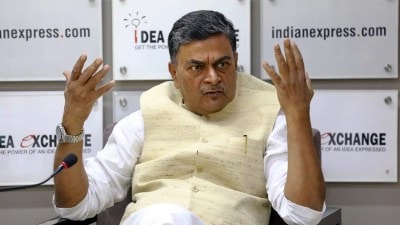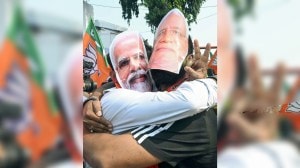Explained: Behind Kerala Assembly’s demand to rename state as Keralam
This is the second time in the past year that such a resolution has been passed by the state assembly. Here is why
 A traditional fishing net near Kochi, Kerala. (Wikimedia Commons)
A traditional fishing net near Kochi, Kerala. (Wikimedia Commons)Kerala Assembly on Monday (June 24) unanimously passed a resolution urging the Centre to rename the state as “Keralam’’ in the Constitution. This is the second time in the past year that such a resolution has been passed.
The resolution
The resolution, moved by Kerala Chief Minister Pinarayi Vijayan states: “The name of our state in Malayalam is Keralam… However, the name of our state in the first Schedule of the Constitution has been written as Kerala. This Assembly is unanimously requesting the Union Government to take immediate steps under Article 3 of the Constitution to change the name of the state to Keralam.”
A similar resolution was passed on August 9 last year. The Chief Minister said that it needed reintroduction due to some technical issues. The previous resolution sought amendments to the First Schedule of the Constitution (list of various states). It also meant to seek an amendment to the Eighth Schedule (list of official languages). But on further examindation, it was realised that the wording did not include the latter demand. Hence the resolution was modified and reintroduced,” Vijayan told the Assembly.
Why Keralam
Kerala is the English word for the Malyali Keralam. There are several theories regarding its etymological roots. The earliest mention of the word can be found in Emperor Ashoka’s Rock Edict II, dated to 257 BCE. The edict reads: “Everywhere in the dominions of King Priyadarsin, Beloved of the gods, as well as those of his frontier sovereigns, such as the Chodas [Cholas], Pandyas, Satiyaputra, Ketalaputra [Keralaputra]…” (translated by epigraphist D R Bhandarkar).
Keralaputra, literally “son of Kerala” in Sanskrit, refers to the dynasty of the Cheras, one of the three main kingdoms of southern India. German linguist Dr Herman Gundert noted that the word ‘keram’ is Canarese (or Kannada) for ‘cheram’, which is used to refer to the coastal land between Gokarna (in Karnataka) and Kanyakumari (Tamil Nadu, India’s southern tip). The origin of the term could possibly be from ‘cher’, which means to join in Old Tamil.
Story of statehood
The demand for a united Malayalam-speaking state first gathered momentum in the 1920s, and aimed to integrate the princely states of Travancore and Cochin, and the Malabar district of the Madras Presidency.
After independence, on July 1, 1949 the two Malayalam-speaking princely states were integrated to form the state of Travancore-Cochin. The state of Kerala was finally created after the State Reorganisation Commission’s recommendation creating states on linguistic-bases. The Commission under Syed Fazl Ali recommended the inclusion of the district of Malabar and the taluk of Kasargod to the Malayalam-speaking people’s state. It also recommended the exclusion of the four Southern taluks of Travancore viz Tovala, Agastheeswaram, Kalkulam and Vilayankode together with some parts of Shenkottai (all these taluks now part of Tamil Nadu).
The state of Kerala came into being on November 1, 1956.



- 01
- 02
- 03
- 04
- 05



































